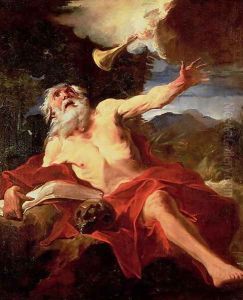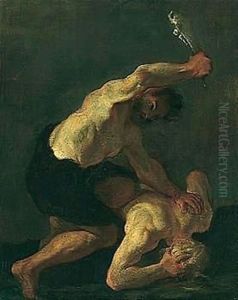Pierre Louis Cretey or Cretet Paintings
Pierre Louis Cretey, sometimes spelled Cretet, was a French Baroque painter whose work and life details are relatively obscure and often confused with other artists of his time. He was born around 1638 in Lyon, France, a city with a vibrant artistic community that was somewhat independent of the dominant art scene in Paris.
Cretey's early life and training are not well documented, but it is believed that he was initially influenced by the work of local artists in Lyon, which at the time was a significant center for textile production and had a strong tradition in decorative arts. His style also suggests that he was aware of the trends in Italian Baroque painting, possibly through direct contact with Italian works or through the influence of his contemporaries who had studied in Italy.
Throughout his career, Cretey developed a reputation for his religious works, which often featured dramatic lighting and a strong sense of movement, typical of the Baroque style. His paintings were characterized by their dynamic compositions and his ability to convey intense emotional expressions in his figures. However, despite his obvious talent, Cretey did not gain the same level of fame as some of his contemporaries, and as a result, his works were sometimes misattributed to other artists.
Cretey's career unfolded primarily in Lyon, where he contributed to the decoration of various churches and possibly worked on commissions for private patrons. The artist's most productive period seems to have been in the late 17th century, although records of his activities are sparse. One of his notable works is the 'Descent from the Cross' in the Lyon Cathedral, which showcases his skill in handling complex compositions and his sensitivity to light and shadow.
Pierre Louis Cretey passed away in 1714 in Lyon. While his body of work did not achieve widespread recognition during his lifetime or posthumously, he is still considered an important figure in the context of the Lyon school of painting, contributing to the rich tapestry of French Baroque art. His paintings that survive today offer valuable insights into the regional variations of Baroque painting in France and reflect the interplay between local traditions and the broader European artistic movements of the time.

